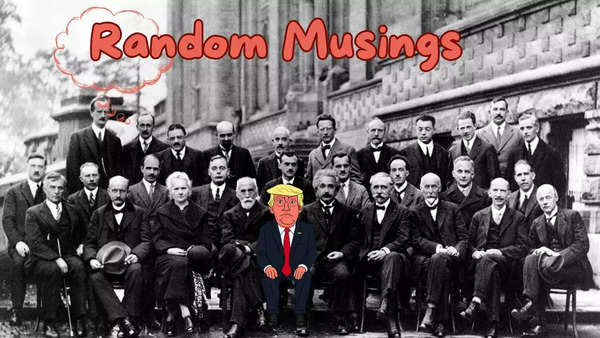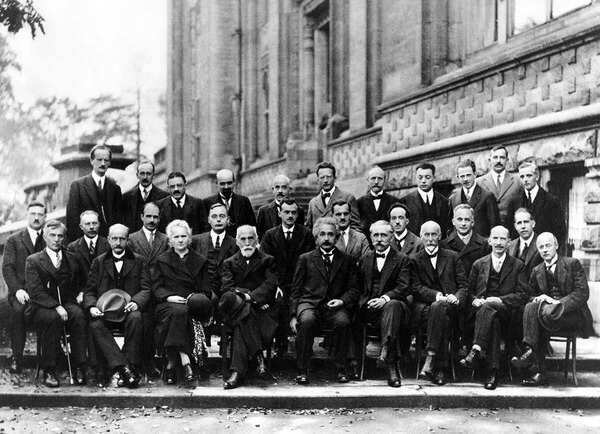
Random Musings: Why quantum physics, not economics, is key to understanding Trump tariffs | World News – The Times of India
In The Tao of Physics, perhaps the finest popular novel on parallels between modern physics and “Eastern mysticism”, author Michiko Kaku sums up the dichotomy by stating: “Socrates in Greece made the famous statement ‘I know that I know nothing,’ and Lao Tzu in China said, ‘Not knowing that one knows is best.’” The two views encapsulate the civilisational split in how complexity is perceived — and explain why Western minds, even their best ones, struggle with concepts like relativity, duality, and of course, Donald Trump.
For over a decade, commentators have tried — and failed — to explain Trump. They’ve overanalysed the polls, underestimated the rallies, and overdosed on coastal smugness. They still can’t fathom how this man keeps winning hearts, minds, and became the first Republican in two decades to win the popular vote. The root of their confusion may lie even deeper: a Newtonian worldview shaped by centuries of Abrahamic certainty — one in which Galileo is forced to apologise for describing the basic framework of the universe, forcing Bhojpuri music artistes to pay tribute to his immortal line E pur si muove (“But it moves”) in numerous songs like Aara Heele Chhapra Heele. A worldview obsessed with levers, with cause-and-effect, with clean inputs and predictable outputs, simply cannot explain Trump, any more than the choreographer of Nach Baliye can solve string theory with a dance sequence.

Every time an economist tries to explain Trump’s “reciprocal tariffs” — which have spared neither man nor beast — an atom gets confused, spins backwards, and applies for asylum in Canada. That’s not a metaphor. That’s quantum panic. Trying to model Trump with classical economics is like trying to decode Bhojpuri lyrics using German syntax — structurally fascinating, semantically pointless.
Trump is not a macroeconomic actor. He is not a supply-side theorist. Trump is a wave and a particle with a spray tan, a Keynesian-Friedmanite who would have driven Sir Humphrey Appleby to early retirement. He is the flutter of a butterfly wing that created a tornado, which then consumed — and continues to cannibalise — the Republican Party and American conservatism as a whole. He exists in multiple states until observed — billionaire populist, law-and-order anarchist, capitalist protectionist. And when observed too closely? He tweets, collapses into pure energy, and launches policies that somehow punish both Canada and America, often simultaneously and with equal conviction.
Economic theory breaks down because it relies on assumptions: rational actors, measurable outcomes, and something resembling a utility curve. But Trump operates in a realm where contradiction is not failure — it is form. Where economists seek optimisation, Trump seeks vibes. He doesn’t want results. He wants resonance. He doesn’t target imbalances — he targets feelings, slights, headlines, and charts that slope in the wrong direction. His approach to trade is not about equilibrium or surplus. It is emotional release dressed as policy. His thinking is not linear. It is entangled. Interdependent.
Non-local. It is the very thing Einstein called “spooky action at a distance.”

Quantum mechanics, unlike economics, has no problem with Trump. In fact, it was made for him. It accepts that multiple truths can exist simultaneously. That particles can be in two places at once. That measuring something changes it. That an action in Iowa can ripple through Shanghai without any obvious chain of cause. Trump, likewise, is a superposition — impeached and invincible, clown and messiah, conman and cosmic joke. His policies appear and vanish. His meanings collapse upon scrutiny. His very presence changes the system observing him.
Even relativity, with its distortion of time and space based on vantage point, might help us understand why watching Trump from New York makes him look like a buffoon, while watching him from West Virginia makes him look like a prophet. There is no universal frame of reference with Trump. There is only position, momentum, and the observer’s faith in whichever truth makes them feel momentarily less anxious about the universe.
And so we come to the trade deficit — to economists, a banal statistic. But to Trump, a moral failure. A sign that someone, somewhere, has gotten one over on America. And so he opens the box, sees the deficit, declares the cat dead, and slaps a tariff on the cat, the box, and the intern who ran the numbers. That the cat may be alive in some parallel economic dimension is irrelevant. The gesture is what matters. The performance. The quantum ritual. Because for Trump, tariffs are not corrective tools. They are karmic theatre. They do not exist to balance books. They exist to imbalance expectations.
Which is why every economist sounds like a therapist these days. “He’s not responding to incentives.” “He might be projecting onto the Canadian dairy lobby.” “He’s seeking psychic closure through retaliatory policy.” But economic theory cannot quantify vibes. It cannot model retribution. It cannot simulate the physics of trolling. And so it collapses — again and again — under the weight of a reality that refuses to obey.
Trump does not follow Newton’s laws. He follows no law. He follows resonance. And when you finally grasp it — the spin, the entanglement, the emotional equation scribbled in Sharpie on an Air Force One napkin — you realise: Trump is the cat. Trump is the box. Trump is the guy charging the cat a 10% import fee for entering the box.
In fact, it’s hard not to think of another Donald in this particular context. When pressed about George Bush’s non-existent weapons of mass destruction.
Or to quote another Donald, in this case Donald Rumsfeld, George Bush’s Secretary of Defence, who delivered a line that would been more at home in 1911 Solvay Conference than a Pentagon press briefing, when pressed about non-existent weapons of mass destruction in Iraq:
“There are known knowns. These are things we know that we know. There are known unknowns. That is to say, there are things that we know we don’t know. But there are also unknown unknowns. There are things we don’t know we don’t know.”
Or to borrow a pithier and earthier line from a Salman Khan film: Dil mein aata hoon, samajh mein nahin.